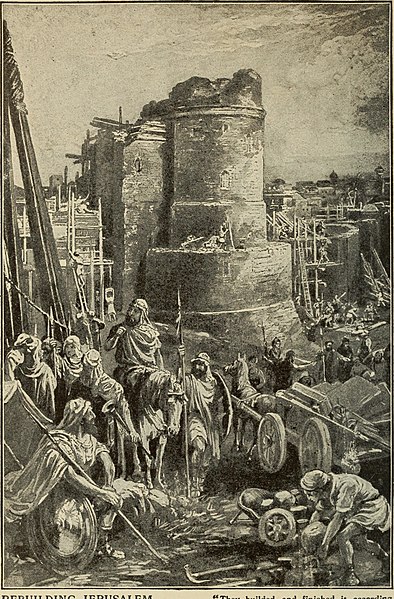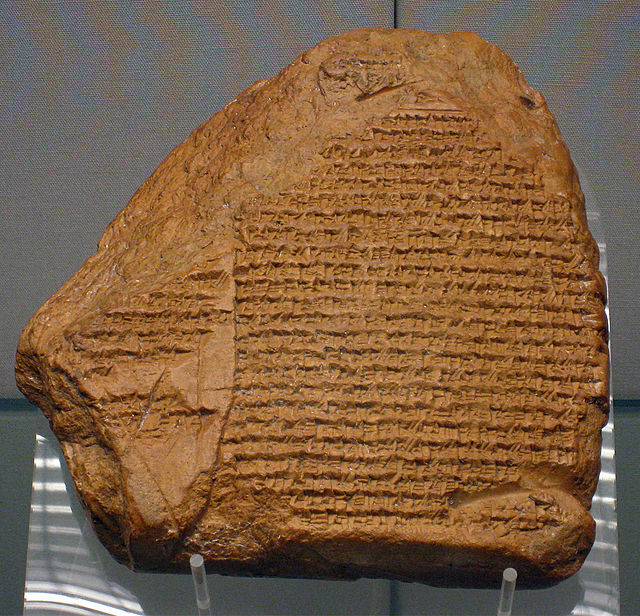Ezra 1 is the first chapter of the Book of Ezra in the Old Testament of the Christian Bible, or the book of Ezra–Nehemiah in the Hebrew Bible, which treats the book of Ezra and book of Nehemiah as one book. Jewish tradition states that Ezra is the author of Ezra–Nehemiah as well as the Book of Chronicles, but modern scholars generally believe that a compiler from the 5th century BCE is the final author of these books.
Cyrus Restores the Vessels of the Temple (Ezra 1:1–11)
Right column of p. 575 of the Greek Uncial manuscript Codex Vaticanus (4th century AD), from the Vatican Library, containing 1 Esdras 1:55–2:5.
The Nabonidus Chronicle, which contains the title of Cyrus as the "king of Persia".
Front of the Cyrus Cylinder, containing inscription similar to the Cyrus's edict.
Ezra 6 is the sixth chapter of the Book of Ezra in the Old Testament of the Christian Bible, or the book of Ezra–Nehemiah in the Hebrew Bible, which treats the book of Ezra and book of Nehemiah as one book. Jewish tradition states that Ezra is the author of Ezra–Nehemiah as well as the Book of Chronicles, but modern scholars generally accept that a compiler from the 5th century BCE is the final author of these books. The section comprising chapter 1 to 6 describes the history before the arrival of Ezra in the land of Judah in 468 BCE. This chapter records the response of the Persian court to the report from Tattenai in the previous chapter: a search is made for the original decree by Cyrus the Great and this is confirmed with a new decree from Darius the Great allowing the temple to be built. This chapter closes this first part of the book in a "glorious conclusion with the completion of the new temple and the celebration of Passover" by the people, as their worship life is restored according to the Law of Moses.

"They builded, and finished it, according to the commandment of the God of Is-rael..." Ezra 6:14. In: Our day in the light of prophecy and providence (1921).





